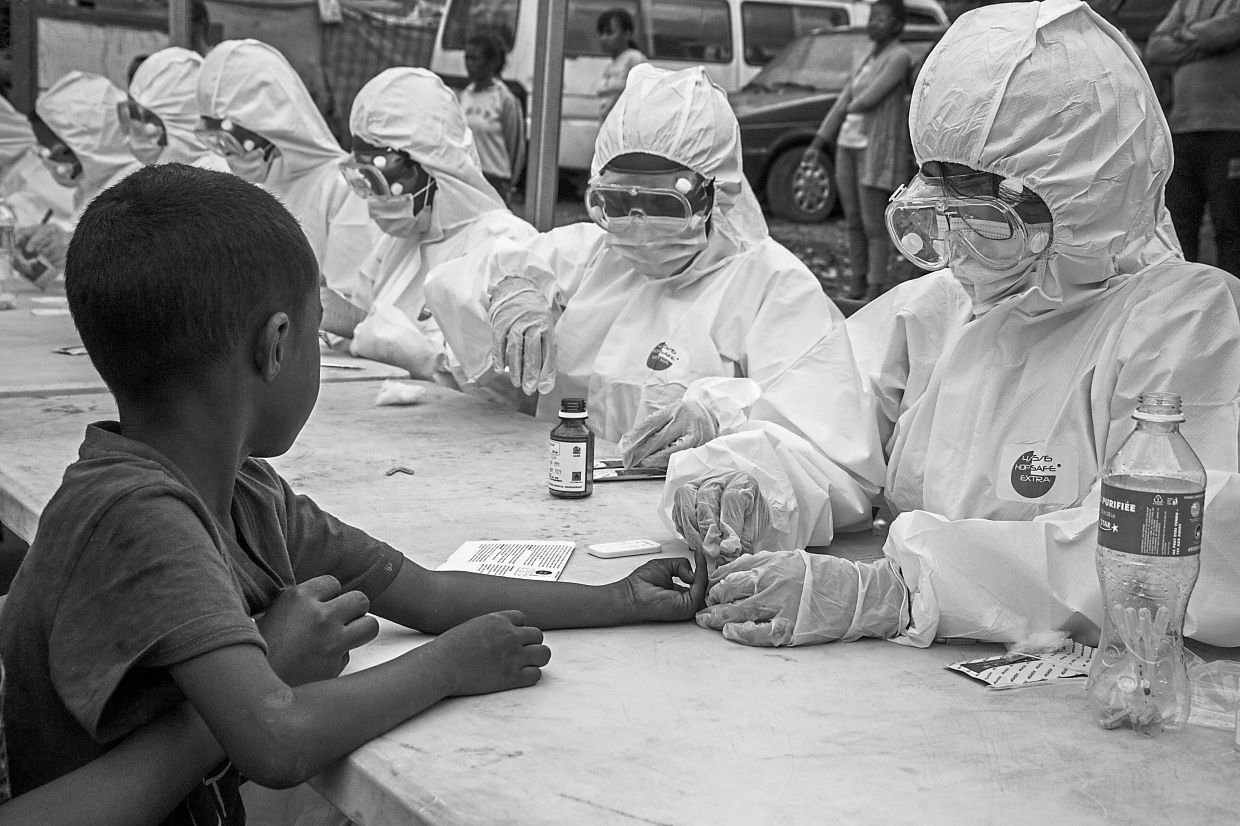The pandemic caused by the severe acute respiratory syndrome coronavirus 2 (SARS-CoV-2), which causes the disease COVID-19, has hit the planet not only in terms of what it has meant for the health sector, but also for the world economy, Which has already shown a series of weaknesses in the face of the outbreak that are reflected in the behavior of its indicators, all of them marking alarming figures.
The pandemic has dealt heavy blows to the economies of China, much of Europe and is now hitting hard the United States.
In its path are the most vulnerable countries, including those in Latin America and the Caribbean, a region that will be one of the hardest hit and which is already beginning to feel the ravages of this phenomenon.
Latin America still maintains great precariousness in the forms of work, with an informal sector that is largely sustained within highly unequal, unstable economies and with high indicators of misery and poverty. There, the lethality of the virus will not be reflected only in those who are directly infected, but will also affect those who cannot produce or carry out their daily work tasks to earn daily sustenance for their families.
According to the most recent report from the International Monetary Fund (IMF), the region will be greatly affected, especially South America.
On April 14, the IMF warned that the pandemic could cause a global contraction of 3% this year, the biggest drop since the Great Depression of 1929.
The IMF warning also indicates that the contraction of 2020 would be higher than the 0.1% that took place in 2009, during the last global financial crisis, the same year that coincidentally is related to the AH1N1 virus pandemic.

Latin American and Caribbean economy post COVID-19
For Latin America and the Caribbean, the data released in the presentation of the World Economic Outlook report is more discouraging, since the agency predicts that the economy of the entire region could fall to 5.2%.
The IMF particularly highlights the vulnerability of Latin America due to its high numbers in the informal economy field, since millions of people have been instantly left without jobs or state protection, after implementing social isolation measures or, as the organization has called it , ‘The great confinement’.
«The high level of informality makes it much more difficult to deal with this crisis», said IMF chief economist Gita Gopinath, who presented the report.
Another factor of concern for the IMF is the fall in the prices of raw materials, the main source of income for Latin American countries. The agency estimates that the industrial metals that South America exports would lose 10.2% of their value this year and, possibly, an additional 4.2% in 2021.
According to the IMF forecasts, the most affected country would be Venezuela, where the economy would fall to 15%; a figure that, however, is less than the 35% contraction registered in 2019.
The following would be Mexico and Ecuador, where a drop of more than 6% of its Gross Domestic Product (GDP) is predicted; while the least affected countries would be Paraguay, with just 1% loss; and Colombia with 2.4%.
However, when comparing the indicators with other regions, the IMF states that Latin America and the Caribbean, according to forecasts, will better withstand the crisis.
For example, for the European Union a decrease of 7.5% is expected; meanwhile, for North America a fall of 6% is predicted.
The countries of Asia and Sub-Saharan Africa will perform better. China, for its part, could have a growth of 1.2% of its GDP this same year, while other countries that could grow are India with 1.9% and Vietnam with 2.7%.

Good wishes for 2021
Despite the contraction that the IMF predicts for 2020, the agency predicts good numbers for 2021, because according to the report, there will be 3.4% growth for Latin America and the Caribbean next year.
The country with the highest growth in 2021, according to the IMF’s perspectives, will be Chile, whose economy will have a positive balance of 5.3%.
Then comes Peru with 5.2%, Uruguay with 5%, Argentina with 4.4% and Paraguay with 4%. The rest of the countries are located as follows: Ecuador with 3.9%, Colombia with 3.7%, Mexico with 3%, Brazil with 2.9% and Bolivia also with 2.9%.
These IMF numbers are similar to those presented by the Economic Commission for Latin America and the Caribbean (ECLAC), which in a recent report lowered the economic growth forecast of 1.3% that it had established for 2020, and which now, due to to the coronavirus pandemic, they indicate a recession between 1.8% and 4%.
In a document titled ‘Latin America and the Caribbean in the face of the COVID-19 pandemic. Economic and social effects ‘, the agency warned that the final economic impact will depend on the measures taken at national, regional and global levels.
ECLAC indicates that the pandemic began to affect the region with the decrease in the economic activity of its main trading partners, since the volume and value of exports will decrease due to the global recession, to which will be added the drop in prices of primary products.
Proof of this is the steep drop in oil prices, which for the first time in its history marked below zero values.

Oil, tourism and manufacturing
ECLAC warns that the geopolitical crisis in the region is exacerbated by the drastic reduction in oil prices registered since the beginning of April and the interruption of global value chains that, in Latin America, would mainly affect Mexico and Brazil, because they represent the largest manufacturing sectors in the region.
Regarding the tourism market, it explained that the small developing states of the islands of the Caribbean, among which are the Bahamas, Barbados, Cuba, Haiti, Jamaica and the Dominican Republic, would be the most affected with a 25% contraction in this sector for this year. .
On the other hand, it considered that the sectors most affected by social distancing and quarantine measures are commerce, transport, and business and social services, since they provide 64% of formal employment, in addition to informal activities that represent 53% of employment in the region and are mainly based on interpersonal contacts that today are restricted.
The agency added that the impact on international trade aggravates the prospects for foreign trade in Latin America and the Caribbean, which, by themselves, were already weak due to the agreement that China and the United States concluded in January and through which the Asian country promised to increase its imports of goods and services from the US in at least $ 77 billion in 2021, which would displace Latin American and Caribbean exports to China in the same product categories.
If only the impact of the pandemic is evaluated, a fall of at least 10.7% in the value of the region’s exports is expected in 2020, as well as a 8.2% contraction in price and 2,5% in the volume of exported products.

Impact of COVID-19 in South American countries
ECLAC noted that the greatest impact will be felt by the countries of South America that specialize in the export of primary goods and, therefore, are more vulnerable to lower prices, unlike exports from Central America, the Caribbean and Mexico, which would record a lower-than-average drop, due to their ties to the US and its far less exposure to the decrease in the prices of primary products.
The agency affirmed that the oil exporting countries will experience the greatest loss in the value of sales abroad, in particular Mexico, Venezuela, Ecuador and Colombia, which would be the most affected.
«The COVID-19 crisis may have an impact on the region’s export performance also due to its effect on the imports used to produce exports. Mexico and Chile would be the countries most exposed to a drop in the supply of China, which supplies around 7% of its intermediate inputs», says the ECLAC report.
Colombia and Peru follow, since they import from China 4.5% and 5% of their intermediate inputs, respectively.
Mexico is the country most exposed to changes in supply and demand conditions in the United States, especially in the manufacturing sector, as is Costa Rica, since 10% of its GDP depends on the supply and demand of the United States.
«The countries most exposed to changes in supply and demand conditions in the European Union are Chile, Mexico and Brazil, since around 5% of their GDP depends on the added value of the services and manufacturing sectors in that market», indicated the report.

Social impact
In the section on social impacts, ECLAC warned that, prior to the pandemic, the situation in Latin America and the Caribbean was deteriorating with increasing rates of poverty and extreme poverty, the persistence of inequalities and widespread discontent.
The crisis – it says – will have negative repercussions because most countries have not invested enough in health. This is demonstrated by the fact that public spending in the sector stands at 2.2% of regional GDP, far from the 6.0% recommended by the Pan American Health Organization.
«Most of the countries in the region are characterized by weak and fragmented health systems, which do not guarantee the universal access necessary to face the health crisis of COVID-19 (…) the systems remain segregated and clearly unequal by offering services of different quality to different population groups (…) the facilities are insufficient for the expected level of demand and depend largely on imports of equipment and supplies», summarizes the agency.
It adds that the health systems of several countries were already under pressure due to the dengue epidemic, which in 2019 infected more than three million people, a record number, while 1,538 people died from the disease.
The encouraging fact is that, since the demographic structure of the region is quite young, the overall impact of the coronavirus may be less than that of developed countries because, on average, only 10% of the region’s population (about 58 million people) is 65 years or older. Barbados, Cuba, Uruguay, Aruba and Chile are the only countries with the largest number of older adults in their total populations.
ECLAC estimated that, if the effects of COVID-19 lead to the loss of income of 5% of the economically active population, poverty could increase 3.5%, and extreme poverty 2%, which implies that tens of millions people would lose basic conditions to survive.




